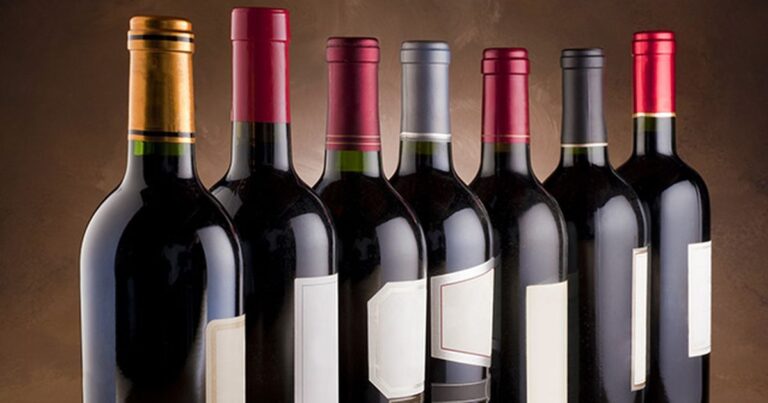How Many Wine in a Case? Understanding Wine Packaging and Storage

How-Many-Wine-in-a-Case
Table of Contents
ToggleWhen it comes to buying wine in bulk or organizing a wine collection, one of the most common questions asked is, “How many winesare in a case?” This simple question leads to a deeper understanding of wine packaging, storage norms, and how the industry operates. In this article, we will explore the typical number of wine bottles in a case, the different packaging formats available, and how this information impacts wine buying and storage decisions.
The Standard Case of Wine
The most common case size in the wine industry is 12 bottles. A case of wine typically contains 12 standard-sized bottles of wine, each 750 milliliters in volume. This is the universal standard followed across most regions and countries, though some exceptions do exist.
Why 12 Bottles?
The 12-bottle case is rooted in historical packaging norms that made transportation and storage more manageable. The wine was originally shipped in wooden crates, which would typically hold 12 bottles, as this was the size that fit best in the wooden barrels used during transit. Over time, the 12-bottle case became the global norm, offering a balance between convenience, cost, and practicality.
Other Common Wine Packaging Formats
Though 12 bottles per case are standard, there are other formats available, depending on the wine’s packaging needs and the buyer’s preferences. These formats offer flexibility and cater to different occasions, storage capacities, and shipping requirements.
1. 6-Bottle Case
A 6-bottle case is commonly used for high-end or premium wines. This packaging is preferred for wines that are more expensive, special editions, or collectible bottles. Smaller cases allow for better protection of valuable wines, and it also makes sense for buyers who do not want to commit to purchasing a full case of 12 bottles at once.
2. 3-Bottle Case
In some cases, especially in online wine shops or for more exclusive wines, you may encounter 3-bottle cases. This is ideal for customers who want to try a small selection of wines without committing to a larger quantity. Wine clubs also tend to offer 3-bottle subscriptions as part of their service.
3.1-bottlee and 24-Bottle Cases
While less common, some specialty retailers or vineyards might offer 1-bottle cases for individual sales or unique gifts. On the other hand, a case of 24 bottles can also be found in bulk wine purchases, typically when buying wine in large quantities for events, catering, or retail purposes.
4. Magnums and Larger Bottles
Large bottles, such as magnums (1.5 liters, equivalent to two standard bottles), are sometimes sold in cases that contain only 6 bottles, depending on the wine’s format. For exceptionally large bottles, such as Jeroboams (3 liters) or Methuselahs (6 liters), the case size could vary further, often containing just a few bottles to fit the bulk packaging.
Factors Affecting Wine Case Sizes
Several factors influence how wine is packaged and sold in cases, including:
- Wine Type: Different types of wine, such as red, white, sparkling, or dessert wine, may have different packaging preferences based on demand and storage requirements.
- Price and Brand: Premium wines, often coming from well-known brands or vineyards, tend to be sold in smaller cases due to the higher cost and the desire to maintain exclusivity.
- Market Demand: Larger quantities are often needed for bulk purchasing, whether for restaurants, wine bars, or retail chains. Smaller quantities may be sold directly to consumers.
Benefits of Buying Wine by the Case
There are several advantages to purchasing wine by the case, both for collectors and casual wine drinkers:
- Cost-Effective: Buying wine in bulk often offers savings, as wine retailers frequently offer discounts on cases compared to individual bottle purchases.
- Storage Efficiency: A case of wine provides a convenient way to store multiple bottles, especially for those with limited space or organized collections.
- Variety and Consistency: By purchasing a case of wine, buyers can ensure they have consistent access to their preferred wine, whether for home consumption or special occasions.
- Gift Giving: A full case or smaller 6-bottle case makes an excellent gift for wine lovers, offering variety and a more thoughtful gesture.
Storing Wine in Cases
Proper storage is key to preserving the quality and longevity of wine. Wine should be stored in a cool, dark place with consistent temperatures, typically between 45 and 65 degrees Fahrenheit. When storing wine by the case, ensure that it is placed on its side to keep the corks moist, preventing them from drying out and causing oxidation.
Conclusion
The number of bottles in a case of wine is generally 12, which is the most common packaging format across the wine industry. While there are other case sizes, including 6-bottle and 3-bottle formats, the standard 12-bottle case remains the preferred option for both wineries and consumers. Whether you are purchasing wine for a personal collection, a celebration, or for retail purposes, understanding the case sizes and the benefits of buying in bulk can enhance your wine experience.
Ultimately, the right case size for you depends on your needs, preferences, and storage capacity, but knowing the basics about wine packaging ensures that you make informed purchasing and storage decisions.
For more detailed information, please visit our blogs.






